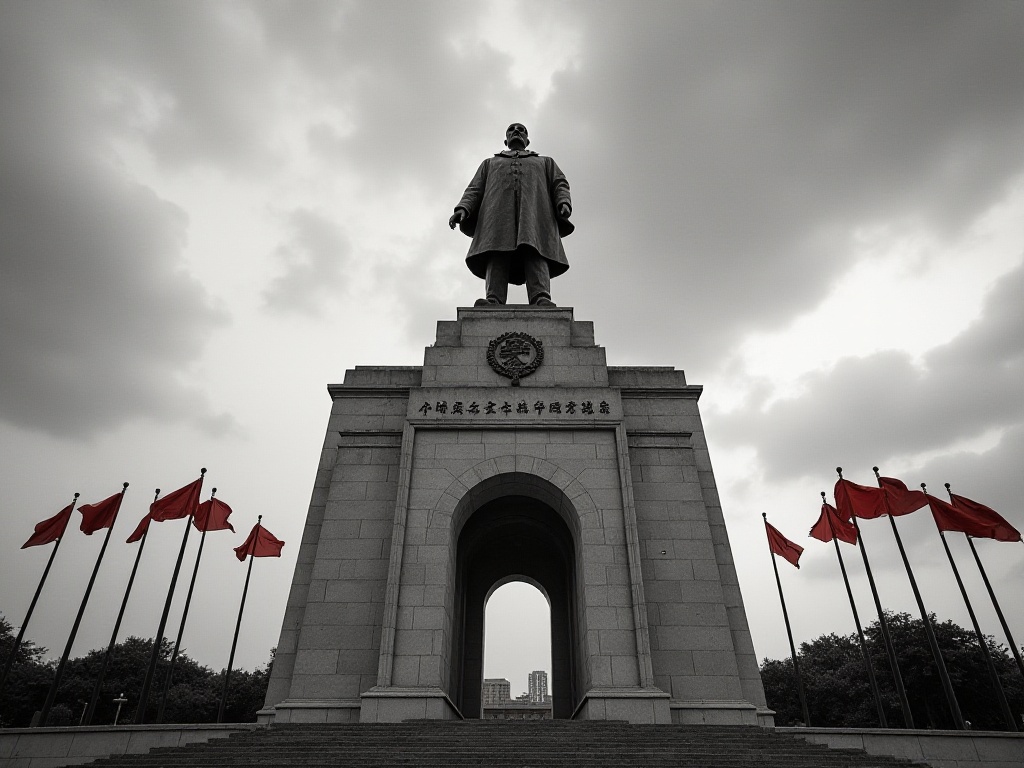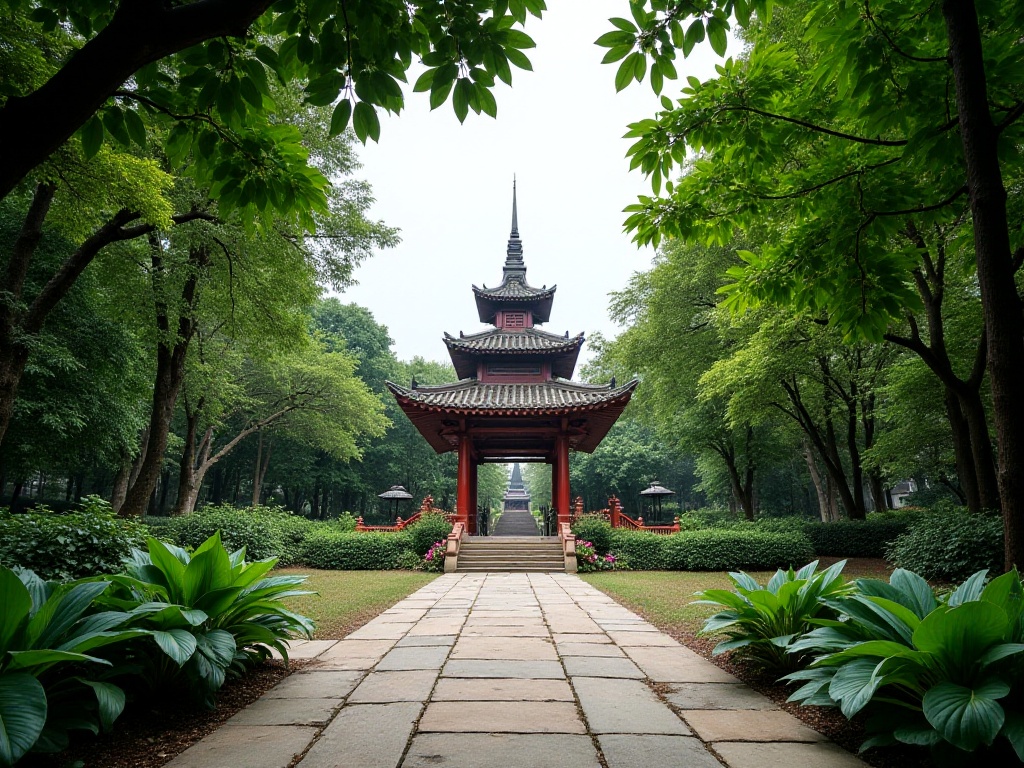First Encounter
When I first visited Elfreth's Alley in Philadelphia, my heart was filled with anticipation and curiosity. This is no ordinary street - it's America's oldest residential neighborhood, standing quietly on this land for over 300 years. Just imagine, when America was still in its early development, this alley was already here. Such historical significance is truly awe-inspiring.
Standing at the entrance, I was deeply captivated by the scene before me. It's like a carefully preserved time capsule that takes us back to 18th century Philadelphia. The houses on both sides showcase typical English colonial architecture, with red brick walls glowing warmly in the sunlight. I noticed many tourists stopping at the entrance to take photos, their faces showing the same amazement as mine.
Architectural Beauty
Walking along this cobblestone alley, I found myself involuntarily slowing my pace. These cobblestones are original from the 18th century, polished smooth by hundreds of years of use. Each stone seems to tell the stories it has witnessed.
The buildings on both sides left me in awe. These houses, built between 1728 and 1836, maintain their original appearance. Each house is a unique work of art, with clear textures visible on the red brick walls and elegant porch designs. I noticed that many buildings feature 12-pane window designs, a typical characteristic of 18th-century Philadelphia architecture.
These buildings are well-maintained, with brick walls still vibrant in color and regularly refreshed paint on doors and windows. I learned that to maintain historical authenticity, all restoration work must use materials identical to the originals, even down to the mortar mix which must strictly follow 18th-century formulas.

Journey Through Time
Walking slowly through the alley, I carefully observed the details of each house. Number 1755 particularly caught my attention, as it was once a sailcloth merchant's shop. The stone steps show clear indentations, marks left by countless footsteps over centuries. Standing on these steps, I imagined the scenes of merchants bargaining here long ago.
The sailcloth merchant must have done well, as Philadelphia was one of North America's most important port cities at the time. Sailcloth was essential for ships, needed by both European merchant vessels and local fishing boats. Through historical records, I learned that this merchant not only sold sailcloth but also dealt in fine fabrics from England.
At number 1757, I discovered an interesting detail. This was once a silversmith's workshop, and his craftsman's mark can still be seen on the doorframe. Philadelphia silverware was renowned for its fine craftsmanship in the 18th century, attracting wealthy colonists who came to commission silver pieces. The house's backyard still retains the original workshop layout, though it's now converted into a storage room.
Life's Imprints
What attracts me most about this alley is how it completely preserves the living scenes of ordinary people from 300 years ago. Each window has its own character, some with arched designs, others simple rectangles. The ironwork decorations on window frames are all handcrafted, with no two exactly alike. These details show us the craftsmanship of artisans before industrialization.
I particularly enjoy observing the porch designs. Some porches feature Ionic columns, appearing especially elegant; others opt for simple wooden posts, emphasizing practicality. The decorations above the porches are also distinctive, some carved with plant patterns, others using geometric shapes. These details reflect the aesthetics and economic status of the original owners.
In some houses' backyards, I discovered remnants of outdoor kitchens from that era. People in the 18th century typically cooked outdoors to prevent fires. These kitchens all had chimneys, some still well-preserved. Iron rings for tethering horses can still be seen on the backyard walls. Imagine, 300 years ago, the owners lived, worked, and rested right here.
Modern Impressions
Although only two houses are now open for public tours, the entire street maintains its strong historical atmosphere. I noticed that current residents take pride in being guardians of this history. They meticulously maintain their houses, preserving the original historical appearance.
Every morning, I see residents cleaning their front steps and sidewalks. They use special cleaners to carefully clean the red brick walls, ensuring no damage to the historic buildings. Some residents place seasonal flowers on their windowsills, adding a touch of vitality to this ancient street.
Visitors are deeply drawn to the atmosphere here. I see many people sitting on street benches, quietly absorbing the historical ambiance. Some photography enthusiasts wait for the perfect light to capture these ancient buildings in different moments.

Preservation Methods
The local community's preservation efforts for Elfreth's Alley are admirable. Since the 1970s, the Philadelphia Historical Commission has invested significant funds and effort in maintaining this historic district. They not only repair damaged building components but ensure all restoration work meets historical standards.
I learned that every restoration project requires strict approval procedures. Even replacing a damaged brick requires finding a replacement matching the original's color and texture. Even the paint used for walls must be mixed according to historical samples. This meticulous work ensures the alley maintains its original historical appearance.
Community residents actively participate in preservation efforts. They established the Elfreth's Alley Preservation Association and regularly hold fundraising events. Many residents voluntarily donate to support maintenance work, and some serve as volunteer guides, introducing the alley's history to visitors. This community-wide preservation model has made Elfreth's Alley an exemplar of historical preservation.
Travel Tips
If you want to visit Elfreth's Alley, I strongly recommend choosing spring or fall. In spring, trees along the alley begin to bud, filling the street with vitality; fall brings golden colors, perfect for photography. Both seasons offer moderate temperatures ideal for walking tours.
I recommend booking a professional guide. The guides undergo rigorous training and know every historical detail of the alley. They'll help you discover many easily overlooked interesting details, like craftsmen's marks on certain doorframes or date plaques on walls.
When visiting, remember to bring a camera and comfortable walking shoes. While the cobblestone surface is historically authentic, it requires some skill to walk on. I suggest bringing a small notebook to record your thoughts, as every detail here might inspire you.
In-Depth Experience
The Independence Day celebration on July 4th is the best time to experience Elfreth's Alley. On this day, the entire street returns to its 18th-century scene. I attended this event last year, and the immersive experience was unforgettable.
During the event, actors wear 18th-century costumes and recreate life scenes from that era. Some play merchants displaying goods in shops; others demonstrate traditional crafts; some act as street vendors selling period-appropriate food.
The most interesting part is the interactive section, where visitors can wear period costumes and experience 18th-century lifestyles. You can learn to write with quill pens or try making crafts with traditional tools. These experiences make history come alive.
Historical Reflections
Each visit to Elfreth's Alley brings new insights. These old houses are not just buildings but cultural carriers of a city. They record the life stories of ordinary people and witness a city's development and changes.
In today's rapid development, protecting such historical districts is especially important. They are like the city's memory, reminding us not to forget the past. Through these buildings, we can understand how our ancestors lived and feel the continuity of history.
This alley also makes me think about the direction of modern urban development. How can we protect historical and cultural heritage while pursuing modernization? Elfreth's Alley's successful experience shows us that with determination and wisdom, modernization and historical preservation can coexist.

Concluding Thoughts
The biggest revelation Elfreth's Alley gives me is that a nation's attitude toward history reflects its cultural confidence. Through carefully preserving this alley, Americans demonstrate their respect and cherishment of history.
This makes me think that in urban development, we shouldn't simply judge buildings' value by "old" and "new." Those buildings carrying historical memories are often a city's most precious assets. They not only witness the past but will continue to witness the future.
When leaving Elfreth's Alley, I always feel reluctant to go. This quiet alley not only lets me feel the warmth of history but also gives me new thoughts about urban development. In this rapidly changing era, such a quiet historical district becomes our bridge for dialogue with the past.







